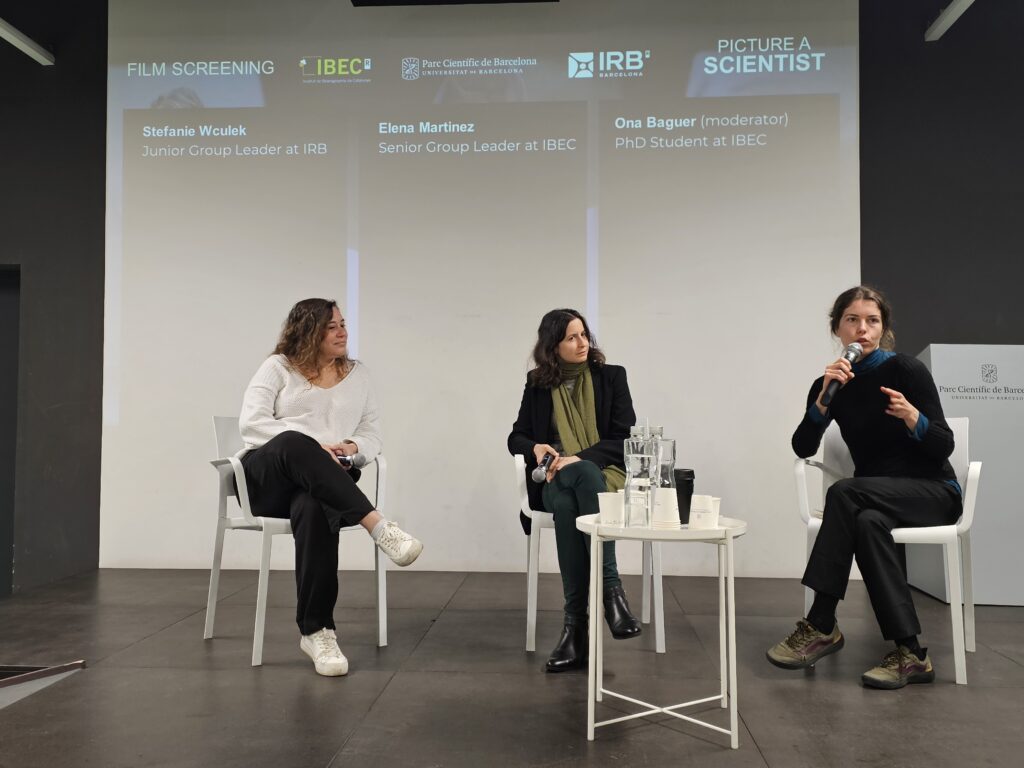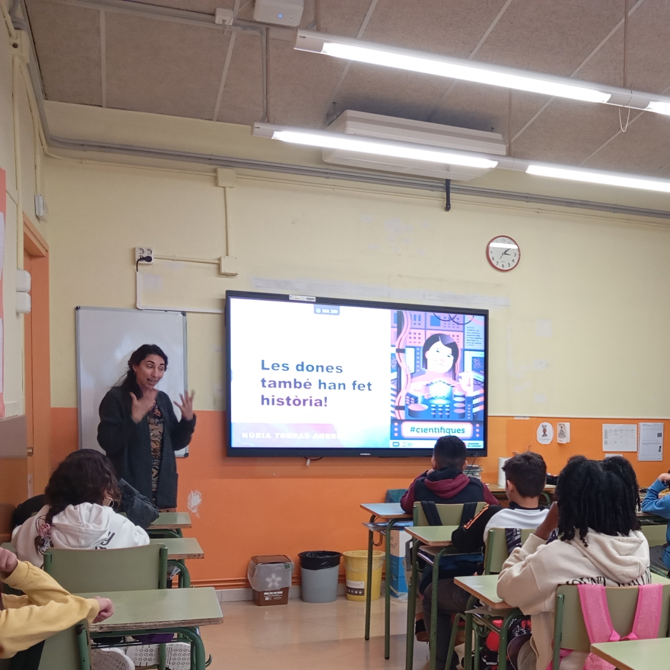One more year, Elena Martinez and Nuria Torras took part in different activities to defend the access of women to STEAM careers and scientific knowledge, in the frame of the International Day of Women and Girls in Science.

Since 2015, the International Day of Women and Girls in Science, proclaimed by the United Nations, has been observed annually on February 11. The primary aim of this global initiative is to eliminate gender stereotypes and entrenched biases that have historically limited the participation of women and girls in scientific fields. This day is dedicated to promoting inclusive and equitable opportunities for women and girls in science. A wide range of activities are organized to support their empowerment, encourage their active involvement in scientific endeavors, and promote progress toward gender equality.
In this context, Elena Martínez took part in a very special activity: the screening of the documentary Picture a Scientist, that shows the growing movement of researchers who are shaping a new narrative for women in science. Biologist Nancy Hopkins, chemist Raychelle Burks, and geologist Jane Willenbring guide viewers through their personal journeys in the scientific world, which encompass experiences ranging from severe harassment to persistent, understated discrimination. Throughout this journey—from confined laboratory spaces to striking field stations—the film introduces leading figures in science, including experts in social science, neuroscience, and psychology, who provide insightful perspectives on how to foster a scientific community that is more diverse, equitable, and inclusive.
The projection took place at the Barcelona Scientific Park (PCB) and was organized by the Institute for Bioengineering of Catalonia (IBEC) in collaboration with the Barcelona Biomedica Research Institute (IRB) on February 13. After the film, Elena Martínez participated in an insightful roundtable in a conversation with two other female researchers, where they shared their experiences and reflections on gender disparities in research. These was a space for dialogue, reflection, and awareness to contribute to foster a more inclusive and equitable scientific community.

On the other hand, Nuria Torras, a researcher working with Elena Martínez at the Biomimetic Systems for Cell Engineering at IBEC in Barcelona, participated once again in the annual event 100tifiques. This event is organized by the Catalan Foundation for Research and Innovation (FCRI) and the Barcelona Institute of Science and Technology (BIST) and brings female scientists into the classrooms to take science closer to schools and highlight female scientific talent.
Nuria gave her talk on March 7th, also coinciding with the International Women’s Day. She went to the Escola Schola in Rubí, a city near Barcelona, and talked to a class of 26 students (11-12 years-old). She started the dialogue talking about some of the women scientists and thinkers in history (from Hypatia of Alexandria to Hedy Lamarr and Margarita Salas), who had to face different stereotypes of their time (racialisation, gender, beauty, …) so that their ideas/discoveries could be considered.
Nuria also gave a presentation about herself and what she does in the lab, focusing on B-BRIGHTER project and in the development of in vitro models using 3D bioprinting. Some of the very interesting and original questions Nuria had to answer were: What do cells eat? What colour are cells? What is the cell nucleus? Can cells of different species be mixed? Why do the inks (in the printer) have different colours?
Hopefully these two activities will help inspiring girls and women to be excellent scientists in the future!
